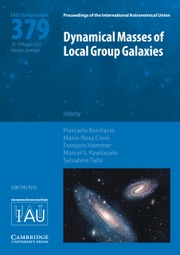Article contents
Panchromatic study of the first galaxies with large ALMA programs
Published online by Cambridge University Press: 10 June 2020
Abstract
Thanks to deep optical to near-IR imaging and spectroscopy, significant progress is made in characterizing the rest-frame UV to optical properties of galaxies in the early universe (z > 4. Surveys with Hubble, Spitzer, and ground-based facilities (Keck, Subaru, and VLT) provide spectroscopic and photometric redshifts, measurements of the spatial structure, stellar masses, and optical emission lines for large samples of galaxies. Recently, the Atacama Large (Sub) Millimeter Array (ALMA) has become a major player in pushing studies of high redshift galaxies to far-infrared wavelengths, hence making panchromatic surveys over many orders of frequencies possible. While past studies focused mostly on bright sub-millimeter galaxies, the sensitivity of ALMA now enables surveys like ALPINE, which focuses on measuring the gas and dust properties of a large sample of normal main-sequence galaxies at z > 4. Combining observations across different wavelengths into a single, panchromatic picture of galaxy formation and evolution is currently and in the future an important focus of the astronomical community.
Keywords
- Type
- Contributed Papers
- Information
- Proceedings of the International Astronomical Union , Volume 15 , Symposium S341: Challenges in Panchromatic Modelling with Next Generation Facilities , November 2019 , pp. 12 - 16
- Copyright
- © International Astronomical Union 2020
References
- 2
- Cited by


